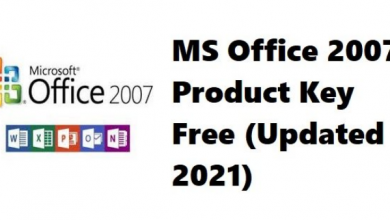Major Cyber Security Threats Businesses Need to Keep an Eye on
Major Cyber Security Threats Businesses Need to Keep an Eye on

All types of businesses of all sizes are now under constant threat from various harmful sources.
From the Fortune 500 companies down to even the smallest of the local stores can be at risk,
and there is indeed no scope of being 100% risk-free from the chances of a cyberattack at any
point in time. The fact here is that that there are too many threats in question, and so tackling
all of them can be merely impossible to ensure foolproof protection.
When it comes to cybersecurity threats,it is not only the possibilities of external attacks. Still, it
can include many internal systems and network vulnerabilities, too, which a hacker may exploit
to steal your company’s valuable data or cause damage to it.
How is security vulnerability different from cyber threat?
To explain this in simplest real-time application terms, computer system vulnerability is a
weakness inside the system or the network, which can be exploited to cause damage to the
system. Such vulnerability will allow a hacker to manipulate the system in some way or other.
This is different from cyber threats, which may involve outside elements where the system
vulnerabilities exist on the network assets. Additionally, they are usually the result of an
intentional effort from an attacker or cybercriminal.
This way,the system vulnerabilitiescan be exploited based on the nature of the vulnerability and
the hacker’s motives. Such vulnerabilities may also exist in the background due to the
unforeseen interactions of various software programs from different system componentsand
the flaws in the programs running on your machines. In this article, we will discuss a few major
cybersecurity threats and vulnerabilities that may affect the well-being of your cyber assets.
Malware threats
As we discussed earlier, malware is created by the attackers and deployed to your systems.
Over the last several years, different types of malware are being created on a daily basis, and
each of them can affect the target system in various ways. A statistic shows that about 360000
malware files are being produced knowingly and unknowingly daily. In contrast, most of these
malware programs are rehashes of the old programs that have been altered to be
unrecognizable to the existing anti-virus software daily.
Ransomware
These are computer programs designed to encrypt the data storage of the victim’s system by
rendering it inaccessible to the users. Once done, the attacker will request the user by
demanding payment or something valuable in return for providing the encryption key. If the
ransom is not given, then the key will be deleted, and the data may be lost forever.
A trojan is a kind of delivery system malware that gets into the system as a legitimate program
and can do big harm. These types of malware may slip behind the outermost layer of network
security by posing as something very harmless but by carrying major trouble inside. Providers
like RemoteDBA.com will ensure protection for your backend databases from ransomware
attacks.
Worms
Worms are computer programs that can replicate and spread through the network in various
means like emails and messages. Once on getting into a system,it will search for your contacts
in the database and do the file-sharing to spread itself out as a mail attachment. The email
which contains this clueless attachment may look like it is from a legitimate person and tempt
the receivers to open it and click on the link to fall prey to the attack.
The goal of any malware program is to access the users’ sensitive data and autonomously copy
the data and send it to a different port or server. There, the attacker can easily access and steal
the information. The basic antivirus programs may protect you against some types of malware,
but what is needed ideally is a multi-layered security solution that uses antivirus for inspection,
firewall for intrusion detection, email virus scanner, etc. mandatory to block the attack of
malware. Thorough employee orientation and strong malware policies while accessing the
business network are also needed to ensure comprehensive malware protection.
How to handle cybersecurity needs?
There are countless threats developed in cybersecurity, and many of these use the old security
vulnerability systems to work with much new malware, which is looking to exploit the same
vulnerabilities time and again. Most people consider updates as a nuisance; however, in reality,
they can save you a lot of money and time, which would otherwise be lost in the future. It is
also very common for businesses users to dismiss the update reminders, which pop up for
certain programs we use, as we do not want to lose any productive time by running an update
for 15 to 20 minutes.
Backdoor programs
This is intentionally created security vulnerability. The computer components or software
programs manufacturerstend to install backdoor programs on the system, which will allow
them to gain access to the system remotely for troubleshooting or diagnosis of the problem.
This may be left as a backdoor program within the add-on program, which may turn out to be
highly challenging security vulnerability over time. When there is a backdoor installed on the
computer without the user’s knowledge,it will make it too easy for anyone with the knowledge
of this backdoor to access the computer system and network.
A real-time example of the backdoor attack can be seen in a case study by Bloomberg that
highlighted the unauthorized access to the fixed-line telecom network of the Huawei carriers in
Italy, which was a system providing internet service to millions of businesses and
homes. Further, Vodafone asked Huawei to remove the backdoors in the home internet routers
and got an assurance from the supplier that the issues will be fixed. However, testing revealed
that the security vulnerabilities remained. These software vulnerabilities are very concerning
and can be used by malicious hackers to gain access to millions of connected networks.
You also should be very careful about the superusers and admin account privileges are given to
the users to run any automated scripts without any malware checks. It is also important to
bring in features like multi-factor authentication for users to ensure your employees’
cybersecurityto protect your system and network from any such threats.




